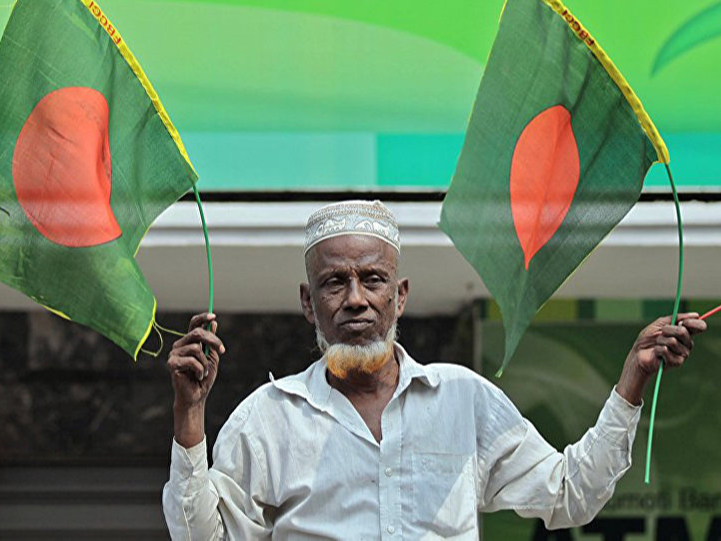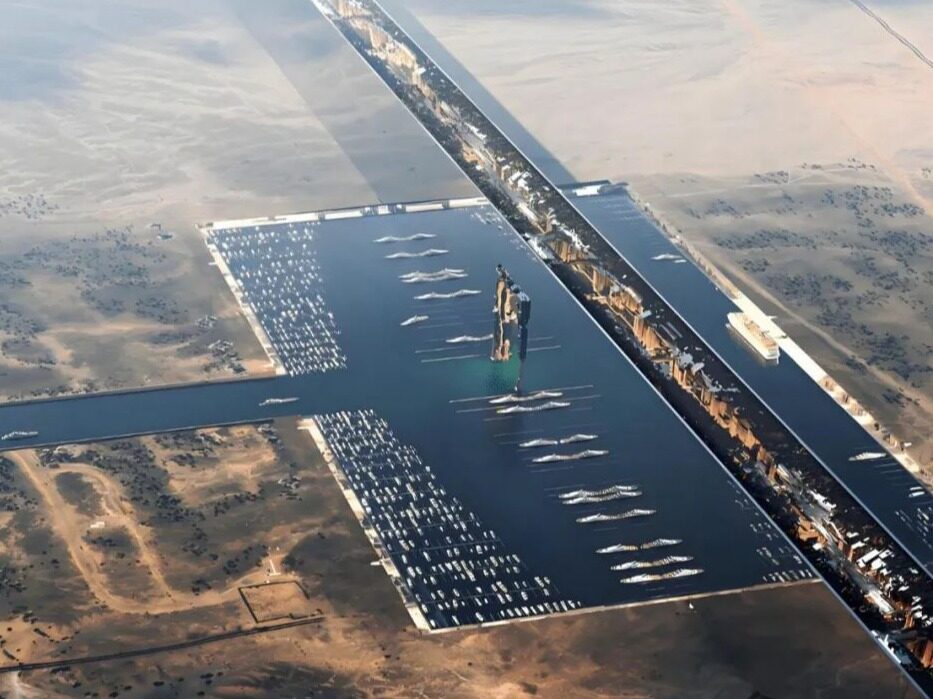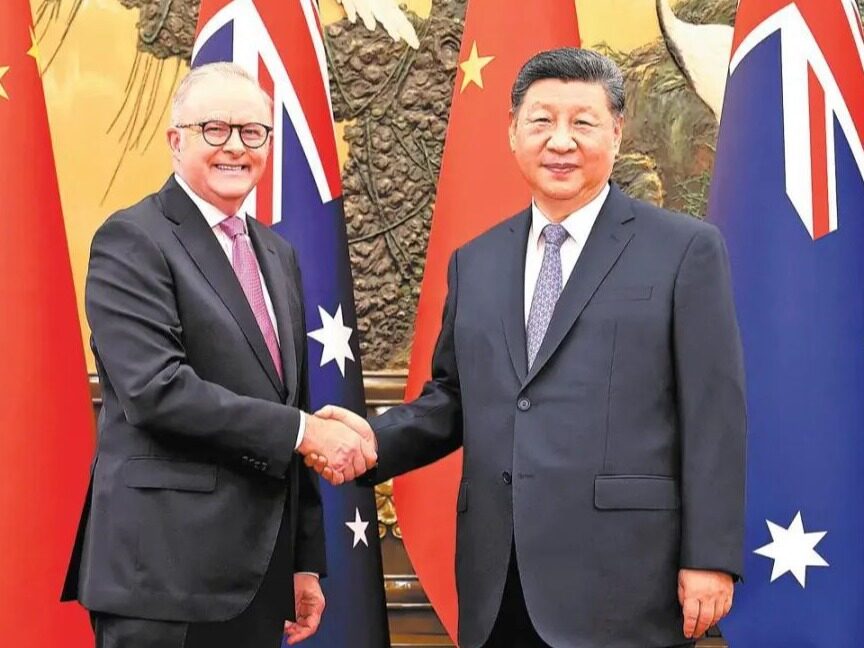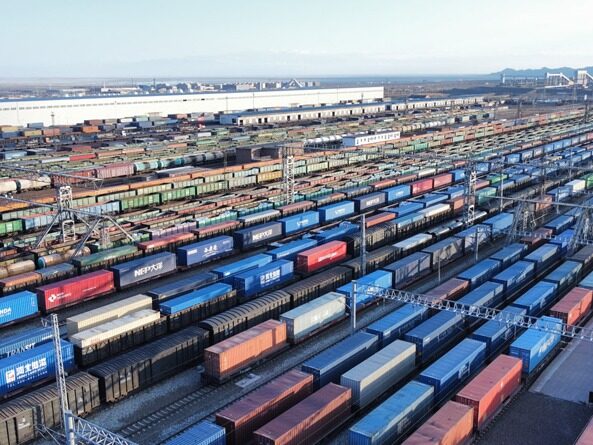- The expansion of China-Bangladesh trade and investment cooperation makes India very uneasy

The Japanese Internet resource "Nikkei Asian Review" and the printed edition of "Europe Times" reported that the expansion of China-Bangladesh trade and investment cooperation has made India very uneasy, and it has also weakened India's influence in Bangladesh. Experts interviewed by Satellite News Agency believe that India is swallowing the bitter fruit of its unfriendly behavior towards Bangladesh.
Ali Riaz, a professor of political science at the University of Illinois, said that we feel India’s discomfort with the growing friendship between Bangladesh and China. Bangladesh’s foreign affairs analyst and diplomat Mohamed Duhid Hussein also believes that Bangladesh has a long list of dissatisfaction with its huge neighbors—from the unresolved issues of water distribution across borders to dishonest business practices.
India is also very dissatisfied with Bangladesh, because the latter requires China to provide funding for water management projects in the Teesta River Basin. The Ministry of Water Resources of Bangladesh has asked China to provide nearly US$1 billion. Previously, due to strong opposition from the Indian state of West Bengal, the signing of the water sharing agreement between Bangladesh and India was postponed.
Now, with the help of China, Bangladesh will solve the water problem of the Teesta River, one of the 54 cross-border rivers between India and Bangladesh. As early as 2010, Bangladesh and India reached a compromise-52% of the water resources were given to India and the rest to Bangladesh. But the position of West Bengal prevented New Delhi from legalizing the agreement. The project has become a tool for political disputes within India, and has even been used to draw votes.
One of the signs of the tension between Bangladesh and India is also manifested in the slowdown in the progress of many Indian projects after Bangladesh’s Prime Minister Sheikh Hasina was re-elected in 2019. At the same time, China's infrastructure projects have received strong support. For example, Bangladesh has handed over the contract for the construction of a new terminal at Hilight Airport to Beijing Urban Construction Group. It borders the sensitive northeast region of India, many of which are the subject of border disputes. Indian companies have also applied for the project. However, in response to India’s dissatisfaction with Dhaka’s decision, Bangladesh’s Minister of Foreign Affairs Abdul Mormon pointed out that the construction of the terminal was not handed over to the Indian company due to excessive cost estimates. The minister also emphasized that the technical level of Chinese experts is high, and the cost of the project proposed by the Chinese company is also low.
If it is the opinion of the Indian media, it should be reasonable. Because of India’s characteristics, other South Asian countries, including Bangladesh, cannot be treated equally. However, how and to what extent the relationship between China and Bangladesh or between Bangladesh and other countries will develop depends on Bangladesh's own interests. If Indian products or companies are competitive, then Bangladesh is naturally welcome. After all, from a historical point of view, Bangladesh and India are closely related to each other in terms of culture, race, and religion. This is something that no other country, such as China, Japan, and the United States, can compare with India. What India needs to do is to improve its competitiveness and bring tangible benefits to Bangladesh through cooperation. Long Xingchun, Executive Dean of Chengdu WorldCom Research Institute, believes: "If he can neither help Bangladesh, but also prevent Bangladesh from cooperating with other countries, it is certainly immoral and useless, because Bangladesh has its own country. Consideration of the interests of the people."
The same problems encountered in Sri Lanka, Maldives and Nepal. On the one hand, India is worried about China's presence there. On the other hand, because of its economic strength, India cannot compete with China in these countries. India is still carrying out economic reforms, but the reforms have not yet been completed. India cannot export the same amount of capital to neighboring countries as China. As a result, India tried to make up for its losses in economic competition with China in South Asia through political suppression of its neighbors. This problem will continue to exist until India finds a solution. For example, India’s economic presence will never lead to an increase in its political and military influence until India obtains China’s guarantee. Until then, India will be nervous and suspicious of all this. And Bangladeshis, like Sri Lankans, Maldivians, and Nepalese, are actually repeating the same things. They also speak of long-term ties with India, as well as close ties with history, tradition, and culture, which make them brothers. But because everyone needs money, they can get money from China. In other words, they hope to develop relations with India and China at the same time without letting these relations affect each other. Alexei Kupriyanov, an expert from the Institute of World Economics and International Relations, "South Asian countries have very limited ability to borrow money from each other, and India has no ability to replace China in the Bangladesh market.

It is difficult to develop regional economic and trade relations in South Asia. They are basically bilateral cooperation. Whether it is the Bay of Bengal Economic Cooperation Organization or the South Asian Association for Regional Cooperation, its development is very difficult. The reason is that India is the only one in South Asia, and the South Asian countries are all developing countries, mainly exporting primary products and raw materials, with low levels, limited economic cooperation with each other, and poor trade complementarity. In addition, because they are all developing countries, their ability to attract foreign investment and foreign investment is also very limited. Therefore, the progress of cooperation within the South Asian region is very slow. In terms of regional economic cooperation in various regions of the world, South Asia performed the worst. However, despite the very poor development of economic cooperation within South Asia, India is very reluctant to participate in countries outside the region, especially China. Long Xingchun believes: "At present, other countries such as China, Japan and other countries in South Asia and the Bay of Bengal region are mainly in the form of bilateral economic cooperation, such as China and Bangladesh, China and India, China and China. Regional free trade and investment arrangements."
China and India are Bangladesh's largest trading partners. Bangladesh’s annual trade deficit with China and India is US$12 billion and US$8 billion respectively. Bangladesh’s exports to these two countries are both about US$1 billion. After China opened its market to 97% of Bangladesh’s commodities in June, Bangladesh’s export conditions have greatly improved. The discount covers approximately 8,000 products. China has also pledged to invest US$20 billion in 27 infrastructure projects in Bangladesh. This was announced during Chinese President Xi Jinping's first visit to Dhaka in 2016.Editor/Huang Lijun
Comment
 Praise
Praise
 Collect
Collect
 Comment
Comment
 Search
Search














Write something~